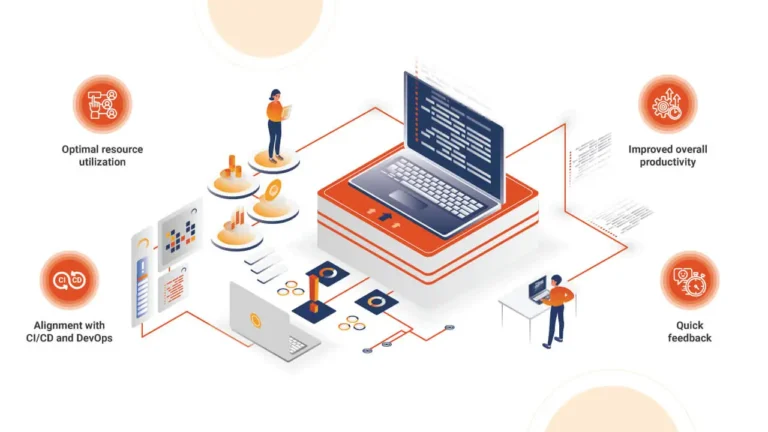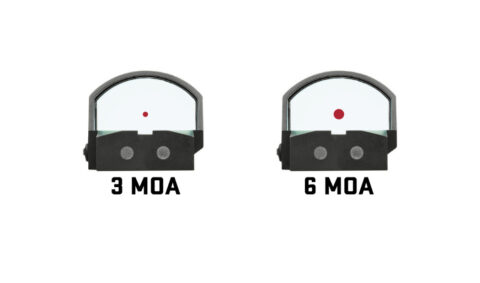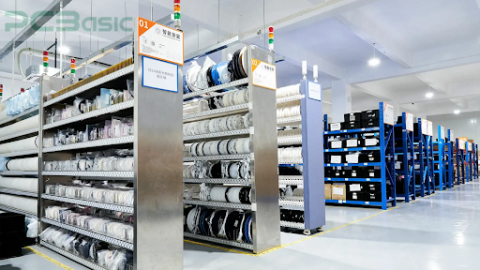In today’s dynamic retail environment, digital transformation is essential for success. Companies must meet evolving consumer expectations across all areas, including e-commerce and point-of-sale systems, while maintaining seamless experiences.
Automation testing stands at the forefront of this shift, enabling retail enterprises to streamline operations and mitigate risks effectively. Through automated testing in stores, warehouses, and distribution centers, businesses can expedite product delivery while upholding quality standards.
Automation testing is not merely a convenience; it’s necessary to handle the significant volume of tests required in the digital age. End-to-end automation in retail domain allows eCommerce companies to adeptly manage the intricacies of digital transformation adeptly, safeguarding both their brand image and financial viability.
Automating Testing Solutions to Address Retail Brand Application Challenges
In retail, application challenges can significantly impact brand reputation. Automation of testing solutions is vital to overcome these hurdles efficiently:
- Performance and Load Testing: Ensuring optimal app performance is critical for a positive customer experience.
- Security Testing: Detecting and rectifying security vulnerabilities is essential for secure transaction processing in e-commerce platforms.
- Load Testing: Swift app loading times are paramount to prevent customer frustration and app abandonment.
- Integration Testing: Timely payment processing is crucial to prevent customer dissatisfaction and app abandonment.
- Usability and Web Accessibility Testing: Ensuring user-friendly interfaces and accessibility features enhances app usability and encourages user engagement.
Retail brands can proactively address application challenges by automating these testing processes, ensuring a seamless and satisfactory customer experience.
Streamlining Retail Management Systems with Test Automation
- Omni-Channel Deployment: In today’s digitally transformed retail landscape, meeting customer expectations across various channels is crucial. Test automation ensures seamless performance across diverse platforms and devices, using emulator combinations to validate application behavior efficiently.
- Cutting-edge UI/UX Design: Continuous testing of digital offerings is essential to maintain relevance and meet customer expectations. Automated testing validates UI and visual components, ensuring a smooth user experience and data integrity across different devices and channels.
- Faster Feedback: Automation testing enables instant feedback on code through regression suites, reducing turnaround time and facilitating informed decisions on production deployment. Analyzing customer feedback further aids in enhancing product quality and customer experience.
- Low-Cost Speed Enhancement: Test automation enables repeated testing across multiple devices, accelerating market releases and saving costs. This agility helps retailers stay ahead of the competition while retaining customer loyalty.
- Integration with Third-Party Applications: Seamless integration across various systems is crucial for scaling retail operations. Automation testing ensures smooth integration of technologies, preventing interruptions in processes.
- Security Enhancement: Retail brands face security threats that can jeopardize customer trust. Test automation enhances security by profiling, authenticating, and encrypting applications, mitigating the risk of data breaches.
- Error Detection Accuracy: Test automation detects bugs accurately, supporting agile quality assurance models and accelerating go-to-market strategies while meeting customer quality expectations.
- Precision is Key: Automation ensures precise outcomes, minimizes errors, and improves the customer experience. Enhanced user experience contributes significantly to brand reputation in the competitive retail market.
Exploring Key Components of Automated Retail Systems
- Automated Inventory Management Systems:
- These systems utilize advanced algorithms and data analytics to streamline supply chain operations. By accurately forecasting demand and optimizing inventory levels, businesses can efficiently manage their stock, reducing the risk of overstocking or stockouts. Moreover, automated inventory management facilitates the synchronization of diverse supply chain elements, including procurement, storage, and distribution, resulting in streamlined operations and diminished discrepancies.
- Point-of-Sale (POS) Solutions:
- POS solutions revolutionize retail operations by providing real-time monitoring capabilities. Retailers can track sales figures and inventory levels instantly, enabling them to make informed decisions about restocking and pricing adjustments. The pricing accuracy is improved, reducing errors and enhancing the overall customer checkout experience. By leveraging POS solutions, retailers can increase sales volumes and operational efficiency, ultimately driving profitability.
- Customer Relationship Management (CRM) Tools:
- Customer Relationship Management (CRM) tools are essential for improving customer experiences and fostering business expansion. These tools allow retailers to analyze customer data, interactions, and preferences, enabling them to create personalized shopping experiences. By understanding their customers better, retailers can build loyal consumer bases and tailor marketing strategies to meet their needs effectively. CRM tools contribute to long-term success and profitability through consistent engagement and satisfaction.
- In-Store Intelligent Video Analytics:
- Intelligent video analytics systems enable retailers to monitor store activities and analyze customer behavior in real-time. These platforms can recognize patterns and trends through machine learning algorithms, aiding retailers in optimizing sales strategies and enhancing store management. Additionally, intelligent video analytics can enhance security by detecting suspicious activities and preventing theft. By leveraging data-driven insights, retailers can enhance operational efficiency and provide better customer shopping experiences.
- Self-Service Checkout Systems:
- Self-service checkout systems offer customers a convenient alternative to traditional manned checkout counters. Customers can independently scan and pay for their purchases, reducing wait times and enhancing overall store efficiency. These systems ensure pricing accuracy and prevent theft through built-in security measures such as weight sensors and product validation. By providing a seamless checkout experience, retailers can enhance customer satisfaction and loyalty while streamlining their operations for increased profitability.
Summing Up
Harnessing the power of retail automation technologies can be a game-changer for businesses, driving growth and enhancing customer satisfaction. By integrating these solutions into their operations, companies can achieve increased efficiency, higher satisfaction, and a significant profit boost.
The key lies in implementing these solutions strategically while keeping the broader business objectives in mind. By prioritizing customer-centricity and embracing a pragmatic approach, retailers can chart a course toward a promising future for their enterprises.
HeadSpin offers cutting-edge automation testing solutions explicitly tailored for retail companies. From ensuring personalized customer experiences to facilitating seamless third-party integration and global testing capabilities, HeadSpin provides the tools for retailers to stay ahead of the competition and thrive in today’s dynamic market.




